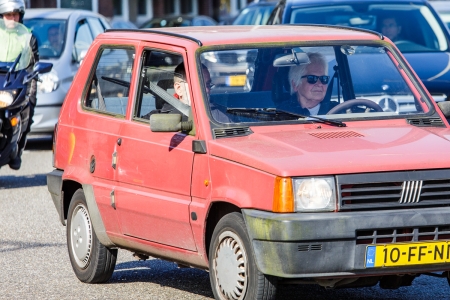In the past decades, the share of over-65s in the Dutch population has gradually increased from 11% in 1980 to 17% in 2014. According to a prognosis of Statistics Netherlands, the share of over-65s will continue to increase to 26% around the year 2040 and will then begin to show a small decline. In absolute numbers this will amount to 4.8 million people. Not only will there be rapid aging in the next few decades, but there will also be double aging; from 2025 onward the proportion of over-80s within the group of over-65s will show a large increase from a quarter in 2014 to a maximum of 44 per cent in 2053 (Van Duin & Stoeldraijer, 2014).
The percentage of people having difficulties in traffic due to functional limitations is clearly higher among the older elderly than among the younger elderly road users. This is not only the case for elderly pedestrians and cyclists, but also for elderly drivers as more of the elderly possess a driving licence. In the Netherlands, in 1985, only 53% of the male and 13% of the Dutch female over-65s had a driving licence. In 2014 these percentages had already increased to 89% and 58% respectively. Among the over-75s, 80% of the males and 40% of the females has a driving licence. Because the group of elderly continues to grow, it goes without saying that road safety policy should pay more attention to the possibilities and limitations of this group of road users.
